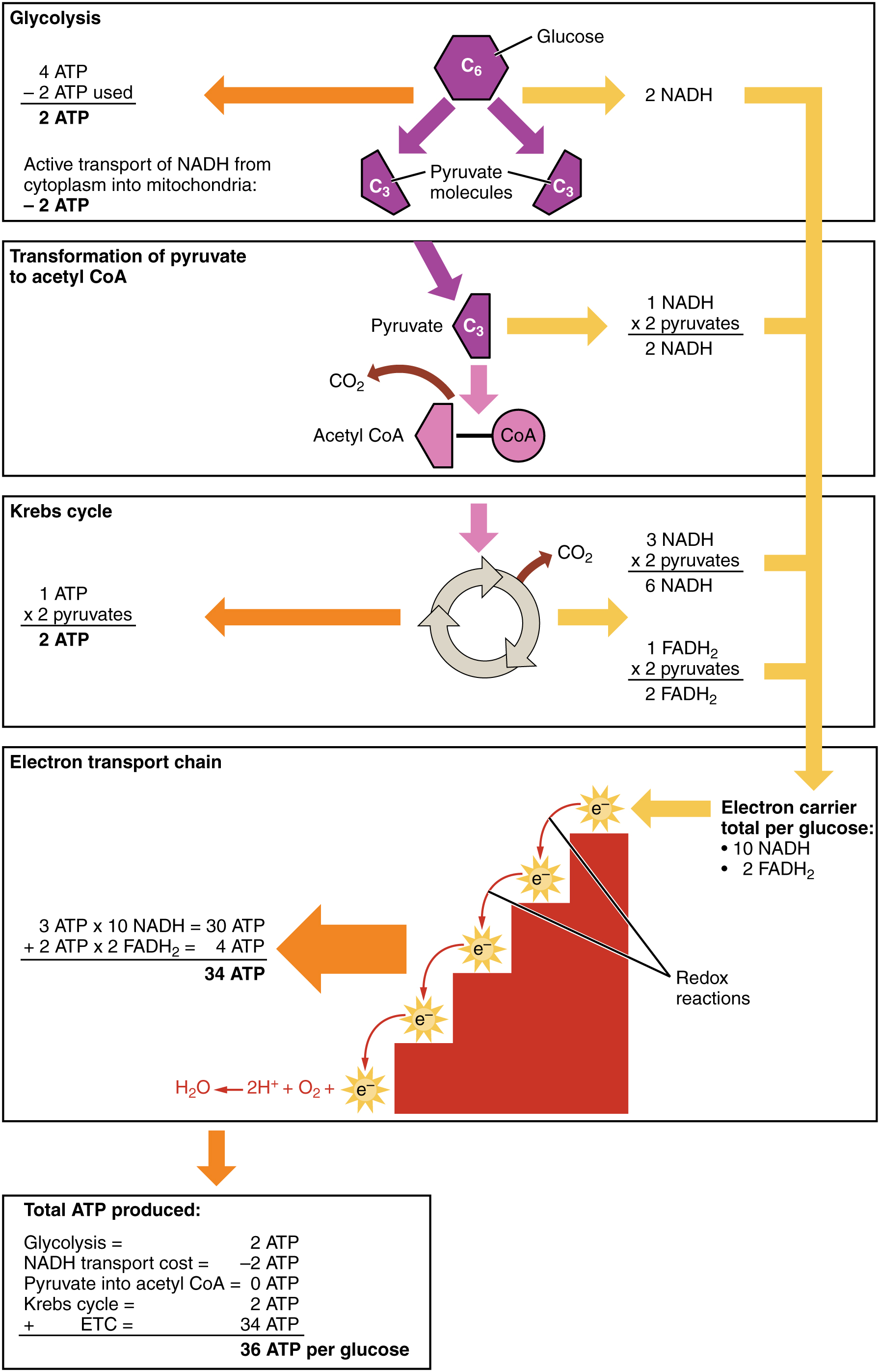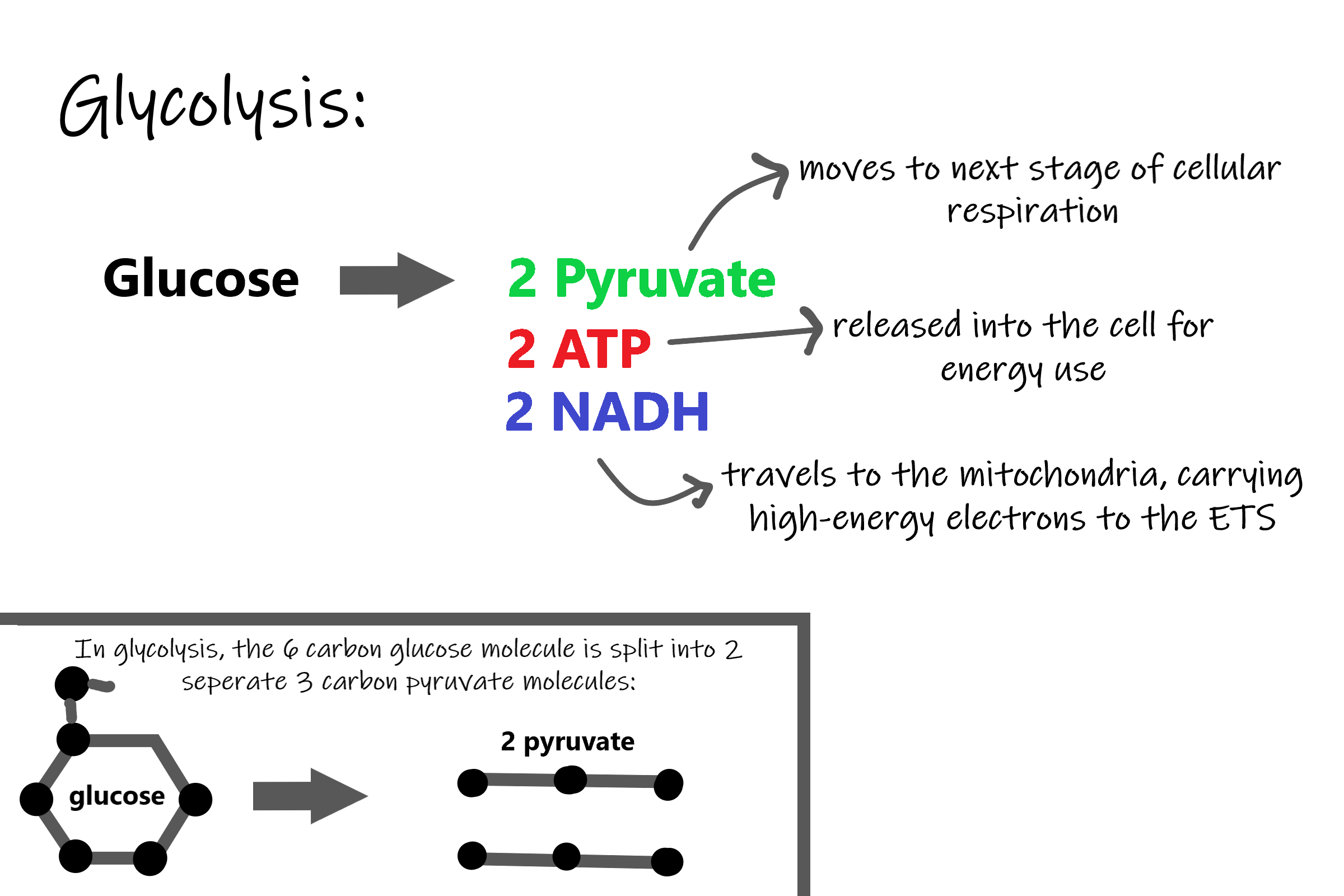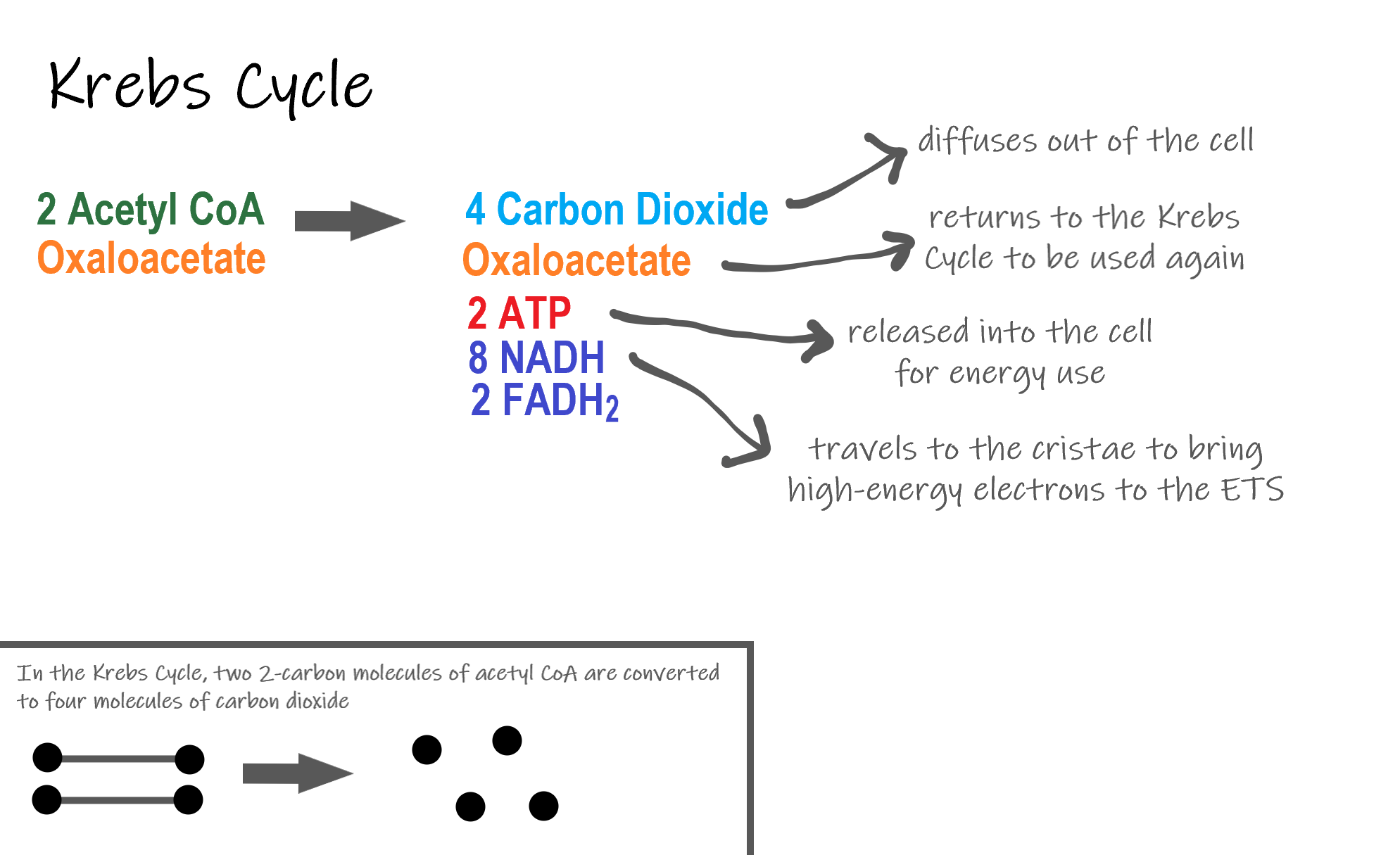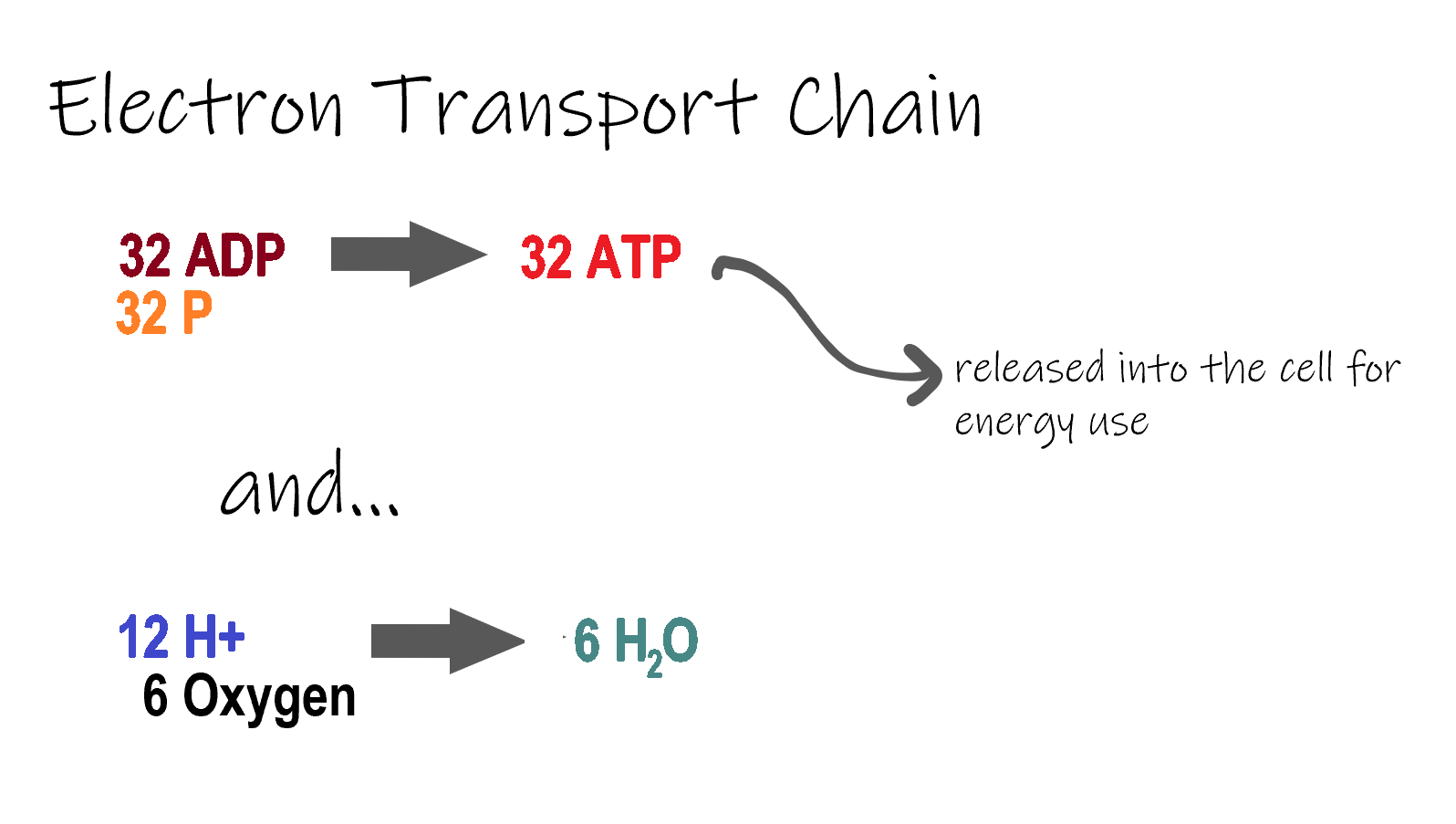4.10 Cancellous Respiration
Created by: CK-12/Adapted by Christine Miller

Bring out the S'mores!
This inviting camp fire can be used for some heat and light. Heat and candent are two forms of that are released when a fuel equal wood is burned. The of living things also grow energy by "fervid." They "glow" in a process called.
What Is Cellular Internal respiration?
is the process by which living cells break down molecules and tone ending . The outgrowth is similar to blazing, although it doesn't produce light or intense high temperature as a campfire does. This is because internal respiration releases the energy in glucoseslowlyandin many small steps. It uses the energy released to form molecules of, the push-carrying molecules that cells use to power biochemical processes. In this way, cellular respiration is an example of Energy pairing: glucose is broken down in an exoergic reaction, and then the energy from this reaction powers the endothermic reaction of the shaping of ATP. Cell-like respiration involves many chemic reactions, but they can completely live summed in the lead with this chemical equating:
C6H12O6 6O2 → 6CO2 6H2O Chemical Energy (in ATP)
In words, the equation shows that glucose (C6H12O6) and oxygen (O2) react to word form carbonic acid gas (CO2) and H2O (H2O), releasing energy in the action. Because oxygen is required for cellular respiration, information technology is an process.
Respiration occurs in the of all living things, both and . All of them burn to fles . The reactions of can be grouped into three stages: glycolysis, the Krebs cycle per second (also called the citric acid cps), and electron transport. Figure 4.10.2 gives an overview of these three stages, which are also delineate in detail below.

Cellular Internal respiration Phase I: Glycolysis
The first leg of cellular respiration is, which happens in the of the .
Ripping Glucose
The wordglycolysis literally means "glucose splitting," which is exactly what happens in this stage. break a speck of glucose into two molecules of pyruvate (likewise acknowledged as pyruvic acerb). This occurs in respective steps, as summarized in the following diagram.

Results of Glycolysis
Energy is required at the start of to split the glucose molecule into 2 pyruvate molecules which go on to stage II of internal respiration. The energy needed to split glucose is provided away two molecules of ATP; this is called the zip investment phase. As glycolysis proceeds, Energy Department is free, and the energy is used to make four molecules of ATP; this is the energy harvesting stage. Every bit a result, there is a net advance of two ATP molecules during glycolysis. During this present, high-voltage electrons are also transferred to molecules of NAD to produce two molecules of NADH, other energy-carrying molecule. NADH is utilised in stagecoach III of cellular respiration to progress to more ATP.
Transition Reaction
Earlier pyruvate can enter the next stage of respiration it needs to equal modified slightly. The transition chemical reaction is a very short reaction which converts the ii molecules of pyruvate to two molecules of acetyl CoA, carbon dioxide, and two high energy electron pairs convert NAD to NADH. The C dioxide is discharged, the acetyl radical CoA moves to the mitochondria to enrol the Kreb's Cycle (stage II), and the NADH carries the high energy electrons to the Negatron Channelize System (stage III).

Structure of the Chondriosome

Before you read about the finally ii stages of faveolate respiration, you need to do it more just about the , where these two stages go on. A diagram of a mitochondrion is shown in Cypher 4.10.5.
The structure of a chondriosome is defined by an inner and outermost membrane. This social system plays an polar character in aerobiotic respiration.
As you can see from the figure, a mitochondrion has an central and outer tissue layer. The space between the internal and outer membrane is called the. The space enclosed by the inner tissue layer is called the. The second stage of cellular respiration (the Krebs cycle) takes place in the matrix. The third stage (negatron transport) happens on the inner membrane.
Cellular Cellular respiration Stage II: The Krebs Cycle
Recall that produces two molecules of pyruvate (pyruvic acid), which are then regenerate to acetyl CoA during the forgetful transition reaction. These molecules enter the matrix of a mitochondrion, where they start the (a.k.a. the Acid Acid Cycle). The grounds this poin is considered a cycle is because a atom titled oxaloacetate is present at some the beginning and end of this reaction and is utilised to break cut down the two molecules of acetyl CoA. The reactions that occur next are shown in Figure 4.10.6.

Steps of the Krebs cycle
The itself actually begins when acetyl-CoA combines with a four-carbon molecule called OAA (oxaloacetate) (fancy Figure 4.10.6). This produces acid superman, which has six carbon atoms. This is why the Krebs bike is also called the citric acid cycle.
After citric acid forms, it goes through a series of reactions that release vigor. The energy is captured in molecules of NADH, ATP, and FADH2, another energy-carrying coenzyme. CO2 is also released A a waste intersection of these reactions.
The last step of the Krebs cycle regenerates OAA, the atom that began the Citric acid cycle. This molecule is needed for the next turn off through the hertz. Two turns are needed because glycolysis produces two pyruvic acid molecules when it splits glucose.
Results of the Glycolysis, Transition Reaction and Krebs Cycle
After glycolysis, transition reaction, and the Krebs cycle, the glucose molecule has been broken downward completely. All six of its carbon atoms have occluded with oxygen to contour carbon dioxide. The energy from its material bonds has been stored in a total of 16 energy-mail carrier molecules. These molecules are:
- 4 ATP (2 from glycolysis, 2 from Krebs citric acid cycle)
- 12 NADH (2 from glycolysis, 2 from transition response, and 8 from Krebs rhythm)
- 2 FADH2 (some from the Tricarboxylic acid cycle)
The events of respiration capable this full stop are – they are releasing energy that had been stored in the bonds of the glucose molecule. This energy will be transferred to the third and final stage of cellular respiration: the Electron Transport System, which is an . Using an exothermic reaction to power an endoergic reaction is known as .
Cellular Ventilatio Leg III: Electron Transport Chain

ETC, the end in respiration produces 32 ATP. The Negatron Enchant Chain is the end of cellular respiration. In that phase, energy being transported by NADH and FADH2 is transferred to ATP. In addition, oxygen Acts of the Apostles as the final proton acceptor for the hydrogens released from complete the NADH and FADH2, forming piddle. Figure 4.10.8 shows the reactants and products of the ETC.
Transporting Electrons
The is the third stage of cell-like internal respiration and is illustrated in Figure 4.10.8. During this stage, high-energy electrons are released from NADH and FADH2, and they act upon on electron-transport chains on the inner tissue layer of the chondriosome. An electron-transport chain is a series of molecules that transferee electrons from particle to molecule by chemical reactions. Some of the get-up-and-go from the electrons is ill-used to ticker hydrogen ions (H ) across the inner membrane, from the matrix into the intermembrane space. This ion transmit creates an that drives the synthesis of .

Fashioning ATP
As shown in Figure 4.10.8, the pumping of hydrogen ions across the inner membrane creates a greater concentration of the ions in the intermembrane space than in the matrix. This gradient causes the ions to flow back crosswise the membrane into the matrix, where their concentration is lower. ATP synthase acts as a convey protein, helping the H ions cross the membrane. It also acts arsenic an enzyme, forming ATP from ADP and phosphate in a process called oxidative phosphorylation. After passing through the electron-transport mountain chain, the "spent" electrons combine with O to form water supply.
How A great deal ATP?
You have seen how the trey stages of use the energy in glucose to make . How much ATP is produced in altogether three stages combined? Glycolysis produces two ATP molecules, and the Krebs bike produces deuce more. Electron conveyance begins with several molecules of NADH and FADH2 from the Tricarboxylic acid cycle and transfers their energy into as numerous as 34 more than ATP molecules. All told, then, up to 38 molecules of ATP can be produced from just one molecule of glucose in the process of cellular breathing.
- is the process by which living cells break down molecules, release energy, and variant molecules of . Generally speaking, this three-level process involves glucose and oxygen reacting to form carbon dioxide and water.
- The first stage of cellular respiration, called , takes base in the cytoplasm. In this footprint, enzymes dissever a corpuscle of glucose into ii molecules of pyruvate, which releases energy that is transferred to Adenosine triphosphate. Following glycolysis, a shortish reaction known as the transition reaction converts the pyruvate into two molecules of acetyl CoA.
- The cell organelle called a mitochondrion is the site of the other two stages of cellular respiration. The mitochondrion has an inner and outer membrane separated by an intermembrane space, and the inner membrane encloses a space called the matrix.
- The ordinal stage of cancellous cellular respiration, called the , takes place in the matrix of a chondriosome. During this stage, two turns through the cycle upshot in entirely of the carbon atoms from the two pyruvate molecules forming carbon dioxide and the energy from their chemical bonds being stored in a total of 16 energy-carrying molecules (including two from glycolysis and two from transition reaction).
- The third and final microscope stage of cellular respiration, called , takes place on the inner membrane of the chondriosome. Electrons are transported from molecule to molecule down an electron-raptus Ernst Boris Chain. Some of the Department of Energy from the electrons is accustomed pump hydrogen ions across the tissue layer, creating an chemical science gradient that drives the synthesis of many more molecules of ATP.
- In every last three stages of cellular respiration combined, as many as 38 molecules of Adenosine triphosphate are produced from just cardinal corpuscle of glucose.
- What is the purpose of honeycombed cellular respiration? Allow a concise summary of the process.
- State what happens during glycolysis.
- Describe the social organisation of a mitochondrion.
- What particle is present at both the beginning and end of the Krebs cycle?
- What happens during the electron transport stage of internal respiration?
- How many an molecules of ATP can be produced from one corpuscle of glucose during complete three stages of cancellous respiration combined?
- Do plants undergo cellular ventilatio? Why or why non?
- Explain wherefore the process of cellular respiration described therein segment is thoughtful aerobic.
- Make three energy-carrying molecules caught up in cellular respiration.
- Which stage of aerobic cellular respiration produces the near ATP?
https://www.youtube.com/ticker?time_continue=2&v=00jbG_cfGuQ&ere;feature=emb_logo
ATP & Ventilatio: Crash program Biology #7, CrashCourse, 2012.
Respiration and the Powerful Mitochondria, The Amoeba Sisters, 2014.
Attributions
Figure 4.10.1
Smores past Jessica Ruscello on Unsplash is used under the Unsplash Permit (https://unsplash.com/permission).
Figure 4.10.2
Carbohydrate_Metabolism by OpenStax College on Wikimedia Common is used under a CC Aside 3.0 (https://creativecommons.org/licenses/away/3.0) licence.
Material body 4.10.3
Glycolysis by Christine Miller is used under a CC BY 4.0 (https://creativecommons.org/licenses/away/4.0/) license.
Frame 4.10.4
Changeover Reaction by Christine Miller is used under a CC BY 4.0 (https://creativecommons.org/licenses/by/4.0/) license.
Figure 4.10.5
Chondriosome by Mariana Ruiz Villarreal [LadyofHats] on Wikimedia Commons is released into the common domain (https://en.wikipedia.org/wiki/Public_domain).
Figure 4.10.6
Tricarboxylic acid cycle past Christine Miller is used under a CC BY 4.0 (https://creativecommons.org/licenses/by/4.0/) permit.
Figure 4.10.7
Electron Transport Chain (ETC) by Christine Miller is used under a CC BY 4.0 (https://creativecommons.org/licenses/by/4.0/) license.
Figure 4.10.8
The_Electron_Transport_Chain by OpenStax College on Wikimedia Commons is used under a CC BY 3.0 (https://creativecommons.org/licenses/by/3.0) license.
References
CrashCourse. (2012, March 12). ATP & Respiration: Crash Course Biological science #7. YouTube. https://www.youtube.com/watch?time_continue=2&v=00jbG_cfGuQ&ere;feature=emb_logo
Betts, J. G., Lester Willis Young, K.A., Impertinent, J.A., Johnson, E., Poe, B., Kruse, D.H., Korol, O., Johnson, J.E., Womble, M., DeSaix, P. (2013, April 25). Figure 24.8 Electron Transport Chain [digital image] . In Anatomy & Physiology, Connexions (Section ). OpenStax. https://openstax.org/books/anatomy-and-physiology/pages/24-2-carbohydrate-metabolism
Betts, J. G., Young, K.A., Wise, J.A., Johnson, E., Poe, B., Kruse, D.H., Korol, O., President Lyndon Johnso, J.E., Womble, M., DeSaix, P. (2013, April 25). Figure 24.9 Carbohydrate Metabolic process [digital image] . In Anatomy & Physiology, Connexions (Section 24.2). OpenStax. https://openstax.org/books/anatomy-and-physiology/pages/24-2-carbohydrate-metabolism
The Ameba Sisters. (2014, October 22). Living thing Respiration and the Mighty Mitochondria. YouTube. https://www.youtube.com/lookout?v=4Eo7JtRA7lg&t=3s
describe the first stage of cellular respiration in mitochondria
Source: https://humanbiology.pressbooks.tru.ca/chapter/4-10-cellular-respiration/#:~:text=The%20first%20stage%20of%20cellular%20respiration%2C%20called%20glycolysis%20%2C%20takes%20place,that%20is%20transferred%20to%20ATP.